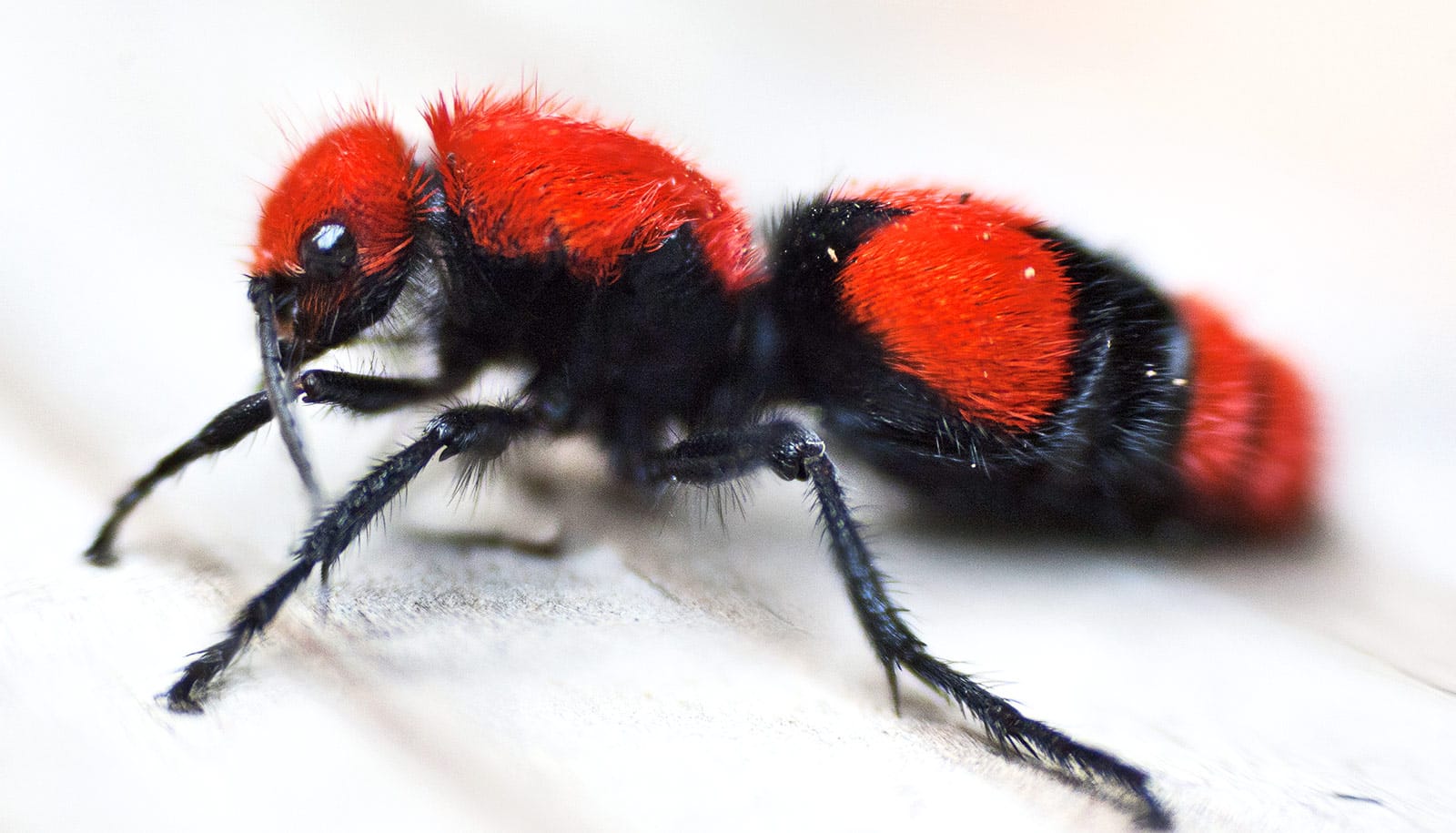Researchers have discovered how scalding heat and tissue injury activate an ancient “pain” receptor in simple animals like worms—and in humans.
The findings could lead to new strategies for analgesic drug design for the treatment of humans.
The simplest (and often first) component of our experience of pain is called “nociception.” This refers to the fact that dedicated receptors in our body quickly respond to potentially damaging conditions, such as extreme heat or tissue injury, to jump-start protective reflexes—like removing a hand from a hot stove.
Simple animals such as worms and insects do not suffer pain in the human sense, but they do use nociceptive receptor systems to steer away from potentially damaging conditions.
In a new study, Marco Gallio and colleagues report that planarian flatworms, fruit flies, and humans may use a remarkably similar molecular genetic mechanism to respond to scalding heat, irritant chemicals, and tissue injury.
“That planarians use the same molecular receptor as flies, mice, and humans to detect potentially damaging or noxious stimuli from the environment shows a remarkable level of evolutionary conservation,” says Gallio, an assistant professor of neurobiology in the Weinberg College of Arts and Sciences at Northwestern University and the study’s corresponding author.
This implies that our simplest pain reflexes have a lot in common with those of most other animals and that what scientists learn by doing basic research on the simplest systems may have reverberations that extend all the way to the treatment of pain in humans.
“Planarian flatworms are amongst the simplest animals with a central brain, and they are capable of active behaviors such as hunting and foraging,” Gallio says. “As such, they are a great model for understanding some of the basic principles of nervous system function.”
Lethal heat
The research team found that planarians possess their own variant of an already famous receptor, the transient receptor potential ankyrin 1 (TRPA1). TRPA1 is best known as the “wasabi receptor” in humans and as a sensor for environmental irritants giving rise to the sensation of pain and itch. TRPA1 is a major target for new analgesic drugs.
In their study, Gallio and colleagues discovered that the simple planarian also possesses TRPA1 and that, like in humans, it controls the responses to irritant chemicals. In other ways, however, the planarian TRPA1 was more like the fruit fly’s TRPA1; rather than being activated by painful cold temperature (like the human’s), it proved essential to steer the worms away from dangerous heat.
“Planarian worms engineered to lack TRPA1 appeared completely insensitive to potentially lethal heat and ventured into our heated experimental chamber as if completely unaware of the danger,” Gallio says. “This was remarkable but also puzzling. We knew from other experiments that planarian TRPA1 was not directly activated by hot temperature, like TRPA1s from other species are.”
Gene swaps
To further test this, the researchers designed an ambitious experiment. “We produced gene-swaps between planarian worms, humans, and flies,” Gallio says.
“We discovered that the planarian TRPA1 (insensitive to heat, on its own) and even the human TRPA1 gene (activated by cold rather than heat) could rescue a TRPA1 mutant fruit fly and restore its ability to respond to scalding heat. This was both exciting and baffling,” he says.
500,000 images of receptor offer clues to chronic pain
The solution to this puzzle came from further experiments, showing that potentially dangerous heat causes the production of a chemical intermediate in both planarians and flies. Tissue damage is often accompanied by the rapid production of a chemical signature composed of hydrogen peroxide (H2O2) and other reactive oxygen species (ROS).
“Our results demonstrate that H2O2 and ROS are also produced by scalding heat, and this fits well with the role of TRPA1 as a receptor for a variety of irritant chemicals, including H2O2 and ROS,” Gallio says.
The idea that Gallio and his colleagues propose is that when an animal, be it a worm, a fly, or a human, comes in contact with potentially damaging temperatures, rapid, localized production of H2O2 and ROS from the scalded tissue activates TRPA1 on nociceptive neurons, contributing to the trigger of an alarm response that steers the animal away from further danger.
The Gallio lab generally uses the fruit fly Drosophila as a model system to study how the brain processes simple information about the environment.
For this work, Gallio teamed up with Christian Petersen, an associate professor in the department of molecular biosciences, who uses flatworms as a model for organ regeneration.
“Flatworms are a less common model in behavioral neuroscience, but they are well-studied for their ability to regenerate an entirely new body from even small cut-out fragments,” says Petersen, one of the paper’s authors. “This work demonstrates the importance of studying diverse model organisms to reveal the conserved components of a complex biological process. The study opens the door to dissecting the genetics of behavior and environmental responses using planarians.”
National Institutes of Health grants, the Pew Trust, and the Chicago Biomedical Consortium with support from the Searle Funds at the Chicago Community Trust supported the work in the Gallio lab. An NIH Director’s New Innovator award supported work in the Petersen lab.
Can this new painkiller evade the flaws of opioids?
The researchers report their findings in the journal journal Nature Neuroscience.
Source: Northwestern University



